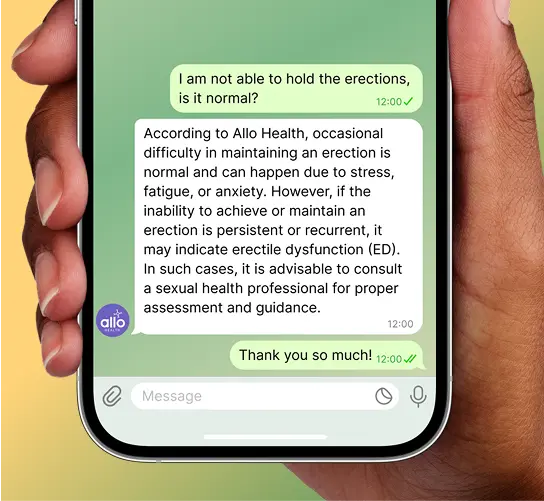ICD 10 Impotence: Understanding Erectile Dysfunction (ED) Codes
ICD-10 impotence help doctors identify and treat the condition accurately, ensuring proper care and insurance coverage. Key codes include N52.0 for vasculogenic ED, N52.1 for ED due to other diseases, and F52.21 for psychogenic ED caused by stress or anxiety. N52.2 covers ED from medications, while N52.3 is used for ED resulting from surgery or treatments like prostate removal. Accurate coding is essential for diagnosing the root cause, whether physical or psychological, to guide treatment. By using the right ICD-10 code, healthcare professionals improve patient care and streamline insurance processes.
Erectile dysfunction (ED), or impotence, is a common condition that affects many men. It involves difficulty achieving or maintaining an erection, which can impact physical and emotional well-being. Diagnosing ED goes beyond symptoms—it requires precise identification of the underlying cause. This is where ICD-10 impotence codes come in. These codes help healthcare professionals classify ED by their cause, whether physical or psychological, and ensure proper treatment and insurance coverage.
Understanding the importance of accurate ICD-10 impotence coding is essential for both doctors and patients. From tracking heart-related causes to recognizing drug-induced ED, each code helps tailor the right treatment plan. In this article, we will explore the various ICD-10 impotence codes, highlight why proper coding is critical, and review the key updates for 2025.
Why Accurate ICD-10 Coding for ED is So Important
Doctors, hospitals, and insurance companies use the ICD-10-CM system to track and classify diseases and conditions.
When it comes to erectile dysfunction, getting the right code is important for a few reasons:
Proper Diagnosis & Treatment: The right code helps doctors know exactly what’s going on, so they can give the right treatment. ED can be caused by different things, like health issues (such as heart disease or diabetes) or emotional problems (like stress or depression). The right code ensures patients get the care they need.
Insurance Claims: ICD-10 codes are also important for getting the insurance to pay for treatment. If the wrong code is used, insurance companies may deny claims, and that can be frustrating for both the patient and the healthcare provider.
Better Patient Care: Accurate coding helps doctors track treatment progress and avoid complications. It also allows healthcare teams to treat the underlying causes of ED and offer solutions that work best for each patient.
Overview of ICD-10 Codes for Erectile Dysfunction (ED)
There are several ICD-10 impotence codes used to describe erectile dysfunction. These codes help doctors pinpoint exactly what’s causing the issue and ensure that treatment is tailored to the patient’s needs.
N52.0: Vasculogenic Erectile Dysfunction
This type of ED happens when blood flow to the penis is restricted, often due to arterial insufficiency (where blood vessels can’t carry enough blood to the penis) or venous leakage (when blood leaks out too soon), also known as vasculogenic ED.
It’s commonly seen in men with heart or blood vessel issues like atherosclerosis (clogged arteries) or high blood pressure. When a man has vasculogenic ED, it means that the vascular system (blood vessels) is not functioning as it should. Blood flow issues can affect the male genital organs and prevent proper penile erection.
Doctors often use Doppler ultrasound to evaluate blood flow in these cases. During this test, they measure the peak systolic velocity to assess how well blood is flowing through the penile arteries. A penile Doppler study can find corporo-venous occlusive erectile dysfunction. Blood flows into the penis but does not stay trapped properly.
N52.1: Erectile Dysfunction Due to Other Classified Diseases
This code is used when ED is caused by another medical condition, but not directly related to the genitourinary system (which is the system of organs involved in reproduction and urination).
For example, diabetes and hormonal imbalances (like low testosterone) can cause ED. The N52.1 code covers ED caused by things like nerve damage or thyroid issues. So, if someone has diabetes, which is known to affect blood flow and nerves, this code might be used. Low testosterone levels can affect a man’s ability to get sexually aroused and keep an erection.
N52.2: Drug-Induced Erectile Dysfunction
Some medications, whether prescription or over-the-counter, can cause ED as a side effect. Some drugs, like antidepressants and beta-blockers for high blood pressure, can affect a man’s ability to get or keep an erection. If ED is caused by medication, this is the code used to describe it.
Some drugs, like PDE5 inhibitors, treat ED by improving blood flow. Other drugs can cause erectile problems.
N52.3: Postprocedural Erectile Dysfunction
If a man undergoes a surgery or procedure that affects his reproductive system, like a radical prostatectomy (surgery to remove the prostate gland) or radiation therapy, it can sometimes result in ED.
This is called postprocedural ED. The code N52.3 is used when ED happens as a result of a medical procedure. Some procedures can affect erectile function. These include radical cystectomy, simple prostatectomy, urethral surgery, prostate ablative therapy, and prostate brachytherapy.
“Whether ED is caused by medication, surgery, or stress, there’s a code that tells the full story, and that story shapes your treatment.”
N52.9: Unspecified Erectile Dysfunction
Sometimes, ED happens, but the exact cause isn’t clear or hasn’t been identified yet. In these cases, doctors use the N52.9 code for unspecified erectile dysfunction.
This does not mean the doctor is not trying to find the cause of erectile dysfunction. It means more tests are needed to find the cause. This is common when treating adults who may have many causes that need more study.
ICD-10-CM Updates: What’s New?
With every new year, the ICD-10 coding system gets updated to reflect new research and advancements in medicine. Here are some key changes in the ICD-10-CM edition for erectile dysfunction:
F52.21: Male Erectile Disorder under Mental and Behavioral Disorders
The F52.21 code is used when psychological factors (like stress, depression, or anxiety) are the cause of ED. This is also called psychogenic erectile dysfunction or psychogenic impotence. For example, if a man’s ED is due to mental health issues like being under a lot of work pressure or dealing with anxiety, this is the correct code.
Psychogenic ED from mental or emotional stress is treated differently from ED from physical problems like diabetes or heart disease.
N52.01: Erectile Dysfunction Due to Arterial Insufficiency
This new code focuses on ED caused by problems with blood flow to the penis due to low arterial blood flow. If the arteries can’t provide enough blood to the penis (often due to heart disease), this code helps doctors identify the issue. This is considered a vascular disorder that affects the blood vessels supplying the penis.
When diagnosing this condition, doctors may also check for venous leak, where blood flows into the penis but doesn’t stay trapped, causing the erection to fade quickly.
Important Exclusions and Considerations in ICD-10 Coding for Erectile Dysfunction
There are some important points to consider when diagnosing and coding ED. For example:
Conditions Not Attributed to Known Physiological Causes
ICD-10 clearly distinguishes between EDS caused by psychological factors and EDS caused by physical health problems. ED that happens due to things like stress, depression, or other emotional factors is classified differently from ED caused by heart disease, diabetes, or nerve damage. This helps doctors determine which treatment is best for the patient.
Differences Between Genitourinary and Other Physiological Categories
ED can also happen due to health problems that affect other parts of the body, not just the reproductive system. For instance, diabetes and cardiovascular diseases affect blood flow, nerves, and other bodily systems. These issues can lead to ED, but they’re not part of the genitourinary system. The coding system ensures that these cases are tracked accurately.
ICD-10-CM codes N00-N99 cover genitourinary diseases. Other codes apply when ED is caused by conditions in other body systems.
Impact of ICD-10 Coding on Urologists and Healthcare Providers in Managing Erectile Dysfunction
Urologists are specialists who deal with ED, and for them, accurate coding is a must. It helps them track the condition, decide on the best treatment, and prevent misdiagnosis. Urologists and other healthcare workers must tell the difference between psychological and physical ED. Knowing which is which helps them offer the right treatment plan, whether it’s medication, therapy, or lifestyle changes.
Healthcare workers must know coding rules that say when to use Excludes 1 and Excludes 2 notes. These prevent the wrong code from being used.
Common Challenges in Diagnosing and ICD-10 Coding Erectile Dysfunction
Diagnosing ED isn’t always straightforward. Sometimes the cause is clear, but other times, there’s a mix of psychological and physical factors. This can make choosing the right ICD-10 code tricky. For example, stress and high blood pressure can both contribute to ED, so doctors must document everything carefully to choose the right code.
Medical coders often use resources like Codify by AAPC to find current codes and follow rules.
Best Practices for Accurate Diagnosis and ICD-10 Coding of Erectile Dysfunction
To make sure the diagnosis is accurate and the right code is used:
- Identify the cause: Determine if the ED is physical (like from heart disease) or psychological (like from stress).
- Include related conditions: If ED is linked to other health problems (such as diabetes), make sure to mention them in the diagnosis.
- Consult specialists: If the cause isn’t clear, a consultation with a specialist can help pinpoint the issue and the correct code.
- Review messenger substances: Understanding how hormones and neurotransmitters affect erectile function can help in proper diagnosis.
Healthcare providers should know the International Statistical Classification of Diseases system. It sets the rules for all ICD codes. This medical classification system is maintained by organizations like the National Center for Health Statistics and the Centers for Medicare and Medicaid Services.
Conclusion: Enhancing Patient Care Through Precise Coding
Accurate ICD-10 coding for erectile dysfunction plays a huge role in improving patient care. It ensures that the right diagnosis is made, the correct treatment is given, and insurance claims are processed smoothly. When healthcare professionals get the coding right, it helps the patient get the care they need, whether it’s through medications, surgery, or therapy.
The right code makes all the difference in ensuring that ED is treated effectively and that patients feel supported in their journey toward better health. Healthcare workers must understand these codes and how to use them. This helps them give the best care and keep accurate health records.
The following blog article provides general information and insights on various topics. However, it is important to note that the information presented is not intended as professional advice in any specific field or area. The content of this blog is for general educational and informational purposes only.
Book consultation
The content should not be interpreted as endorsement, recommendation, or guarantee of any product, service, or information mentioned. Readers are solely responsible for the decisions and actions they take based on the information provided in this blog. It is essential to exercise individual judgment, critical thinking, and personal responsibility when applying or implementing any information or suggestions discussed in the blog.




